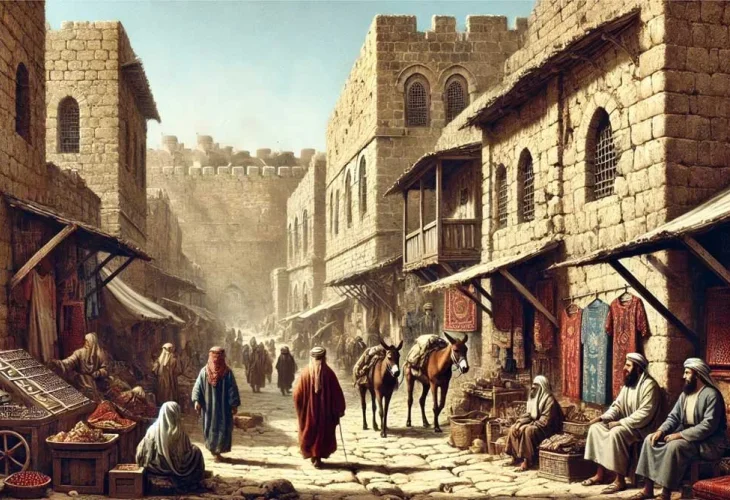Building the Homeland: The Vilna Gaon's Students and the Safed Earthquake
In 1809, the first group of the Vilna Gaon's students, led by Rabbi Menachem Mendel of Shklov, embarked on a perilous journey to Israel. They withstood a grueling year-long sea voyage before settling in Safed.

In 1782, a new era began in the history of Jewish settlement. The Vilna Gaon, leader of Lithuanian Jewry, set out from Vilna for the Land of Israel. However, he did not reach the Holy Land. Much like the Baal Shem Tov, he returned for reasons unknown to us upon reaching Königsberg. Nevertheless, he instructed his students to make the journey.
In 1806, eight years after the Vilna Gaon's passing, his students gathered in Shklov and decided to fulfill their master's wish and move to the Holy Land.
In 1809, the first group of the Vilna Gaon's students set out for Israel. Seventy people, led by Rabbi Menachem Mendel of Shklov, one of the Vilna Gaon's foremost students, traveled for a year on rickety sailing ships before finally settling in Safed.
What was innovative about this journey was that it was a settlement effort aimed at bringing more Jews to the land. The initiator of this endeavor was none other than Rabbi Chaim of Volozhin, a prominent student of the Vilna Gaon, who also organized financial support for the immigrants.
In 1810, additional caravans of the Vilna Gaon's students arrived, led by luminaries like Rabbi Israel of Shklov, author of "Pe'at HaShulchan," Rabbi Saadia Neta, among others.
Over the next seventy years, the group endured great hardships, a period they referred to as "The Era of Suffering." In 1813, a cholera epidemic devastated Safed, taking many lives and nearly wiping out the community. Rabbi Israel of Shklov lost his wife, two sons, two daughters, son-in-law, and eventually his parents in the epidemic. The remaining Jews fled to villages.
In 1820, Rabbi Chaim Farhi, the Jewish treasurer of the pasha in Acre who helped the immigrants financially and politically, was murdered, worsening their situation.
In 1822, the great earthquake struck Safed, causing widespread damage.
Rebellions, looting, and plundering repeatedly impacted the Jewish settlements. In a letter, one Jew explained why, despite their desire to stay in the Holy Land and commitment to do everything possible, it became untenable: "Some of the property and furniture we brought from Europe was stolen and destroyed by the villagers during the rebellion (1834)... To avoid leaving the Holy Land, we tried to subsist on one meal a day to sustain our families. But even this support began to dwindle. Despite this, our wives urged us not to leave and agreed with the Talmudic injunction that if a person can subsist on one meal a day, and that meal includes bread, they must not leave the Holy Land. However, we men could not agree. Therefore, we sold the remnants of our possessions and traveled to Constantinople."
The Vilna Gaon's students emphasized buying land in Israel to fulfill commandments tied to the land. Rabbi Israel of Shklov also aimed to renew the Sanhedrin, as Rabbi Yaakov Berab sought over two centuries earlier, by seeking out the Ten Lost Tribes to bring the majority of Israel back to their land and hasten redemption.
Despite these tribulations, the settlement grew by 5,000 people from 1809 to 1840! This fact reveals that the immigration stream to the land did not cease during those years; it actually increased, as Rabbi Israel wrote: "And let it be known to you that from many countries, virtuous people flow to the holy communities, may they be built and established speedily in our days, Amen, from all levels and ages, young children and the elderly."
A census conducted by Montefiore in 1839 shows that, on average, 600 people immigrated each year from 1830 to 1839.
Aryeh Morgenstern writes: "An analysis of the data reveals that over 45% of the population is under the age of twenty! Meanwhile, the elderly (ages 50-70) make up only 18.79% of the population."
In Zionist literature, pre-Zionism immigrants were often portrayed as "elderly Jews who came to die in Israel and be buried there." However, the historical reality was entirely different. Thousands of Jews risked everything to settle the land at any cost, purchased land, worked it, and struggled to cling to it despite all obstacles.

